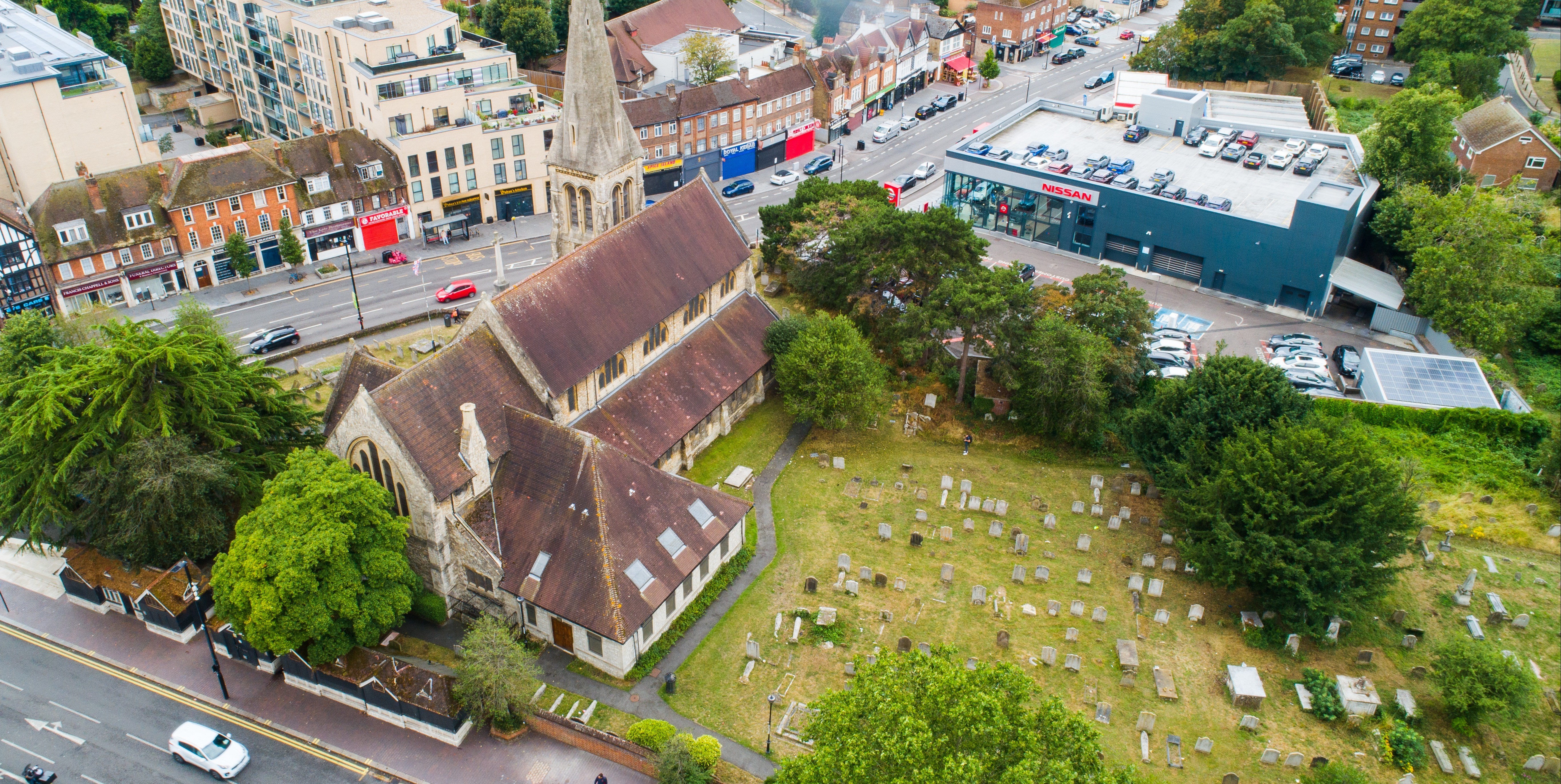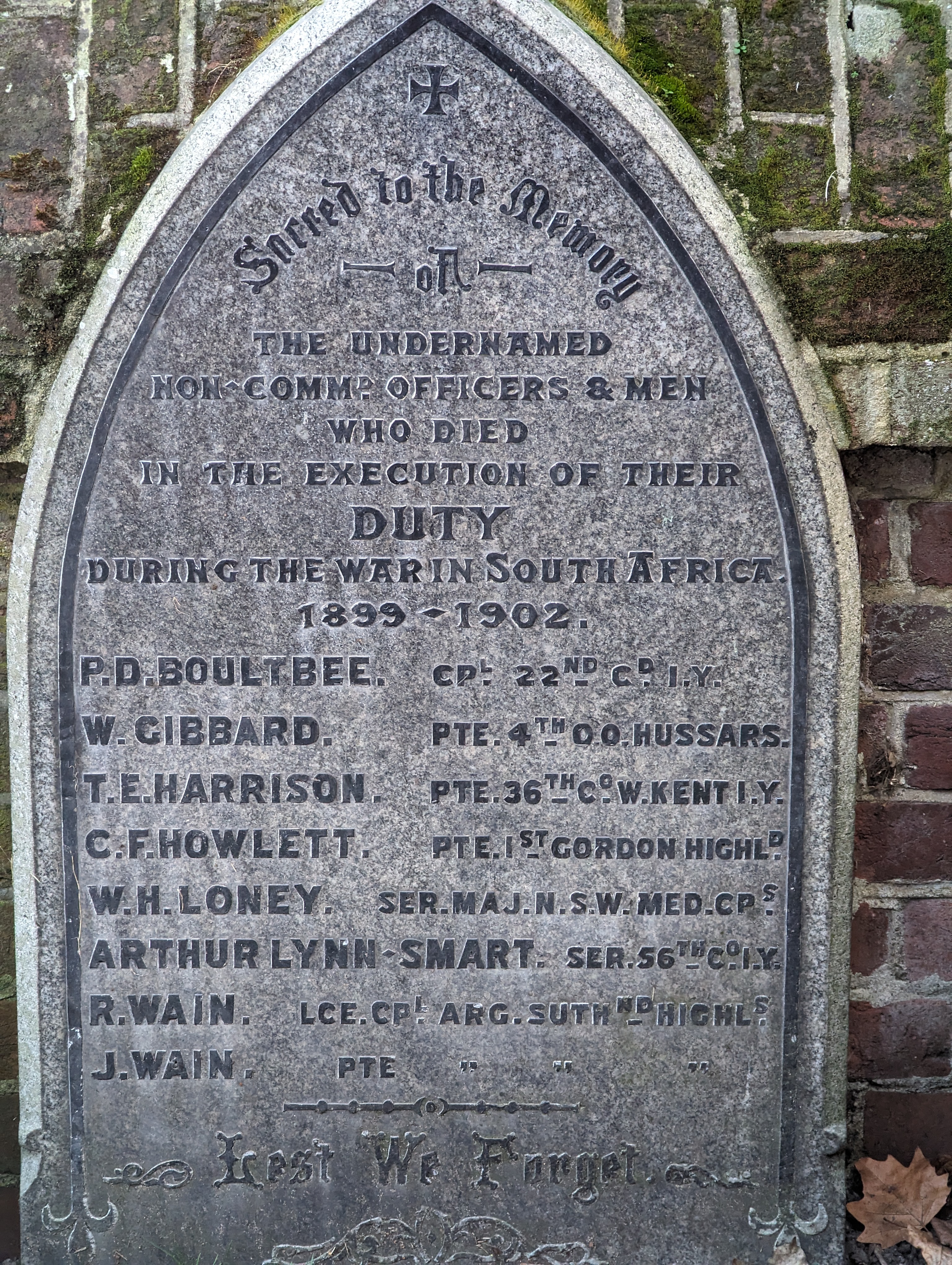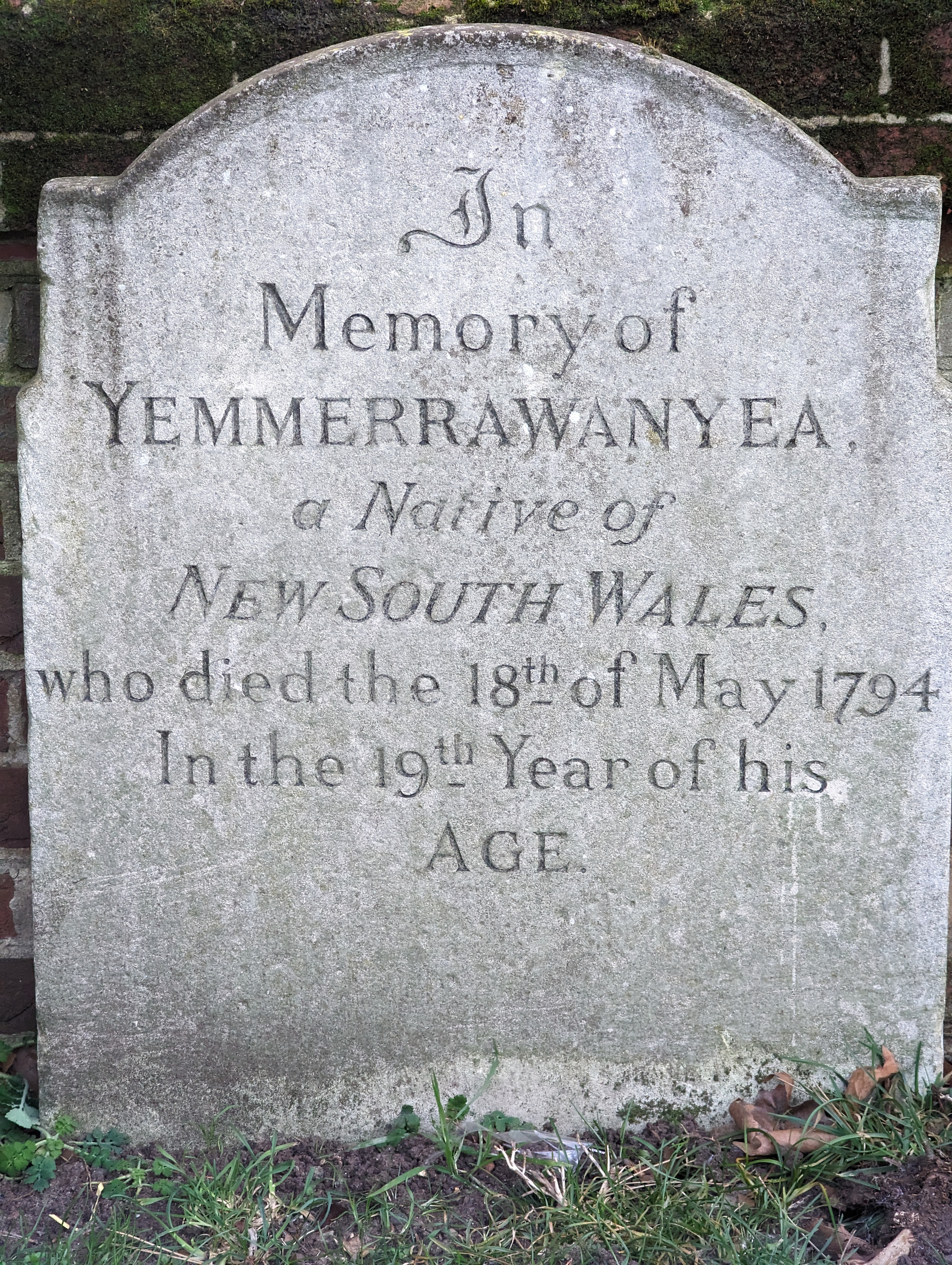The Graveyard

As our website has already stated, we believe a church stood hereabouts from the early 12th century. Consecrated oil for baptisms was brought to Eltham in 1115. Our list of priests is complete from 1160 A.D. From that date, or even before, the people of Eltham buried their dead in their most sacred place… the environs of their parish church. AS the population of Eltham grew rapidly in the 19th and early 20th centuries, extra land was bought to enlarge the churchyard. This is known as A and B sections. The oldest part, in and behind (to the north of the building and visible from Well Hall Road) is section C. In all, we can identify over 3,000 graves with multiple burials.
The church has a card index of all known graves within the churchyard. If you seek a particular ancestor, a polite written enquiry giving the name and approximate date… especially if accompanied by a donation to our church funds… will usually confirm whether the person was laid to rest in that sacred space, and alongside whom.
There are twelve Commonwealth War Graves within the churchyard, six from World War I (1914-1918), and six from World War II (1939-1945). By the term “Commonwealth War Grave” we mean a burial marked by a simple white stone of standard shape and pattern, standing about one metre high, and usually with a regimental or service badge carved on it. The CWG commission has 21 in its Eltham listings, but strictly speaking, the other 9 are not “graves”. Names of service personnel are commemorated on family tombs, although they were actually buried with a standard tombstone, in a war cemetery near where they fell. Some were “missing in action” or “drowned at sea” and consequently have no graves.
 There are 276 names on the war memorial facing the high street. All are of WWI. There would be 296 more, had a memorial to Eltham’s WWII dead of the armed forces been added.
There are 276 names on the war memorial facing the high street. All are of WWI. There would be 296 more, had a memorial to Eltham’s WWII dead of the armed forces been added.
Unusually, Eltham has a memorial to eight men with local connections who died in the South African War in 1899-1902. Half died of wounds and half of diseases. Hundreds of Eltham’s townsfolk attend commemorations on Remembrance Sunday annually. Local historians have details of almost all those 580 dead. When Eltham says ‘We will remember them’, it means what it says!
 With over 3,000 memorials to chose from, we will point out a few of international significance. On the south wall of the church, a small slate plaque commemorates Thomas Doggett, who founded the oldest continuing rowing race in the world, in 1715 and died in Eltham in 1721, in retirement from his work as a London theatre manager. The Fishmongers Company paid for the memorial.
With over 3,000 memorials to chose from, we will point out a few of international significance. On the south wall of the church, a small slate plaque commemorates Thomas Doggett, who founded the oldest continuing rowing race in the world, in 1715 and died in Eltham in 1721, in retirement from his work as a London theatre manager. The Fishmongers Company paid for the memorial.
Directly behind the building, you will find a rectangular tomb, with a circular stone plaque on it commemorating Sir William Jones and his family. He was the commander of the Bombay Marine, part of the private navy of the East India Company in the 1750’s. He was credited with ridding the west coast of India of the threat of piracy, so making Anglo-Indian trade safer. He died as his daughter was preparing for her wedding. He had retired to Eltham, living at what is now the site of St Mary’s Roman Catholic primary school on Glenure Road.
Backing on to the boundary wall, adjacent to the bus stop on Well Hall Road, is a memorial to Yemmerawanyea, a “native of New South Wales” who died in Eltham in 1794. Lord Sydney lived in Chislehurst, and sponsored Captain Arthur Phillip when he took the first fleet of convict ships to set up a penal colony, in what he named Port Jackson in 1788, and which grew into the city of Sydney.
 When Captain Phillip returned to England he brought with him two Australian men, Bennelong and Yemmerawanyea. His idea was that they should become ambassadors and interpreters to assist British settlement in their homeland. The young visitors were shown the sights of London, taken to visit parliament and various theatres. With the death of Yemmerawanyea, Captain Phillips plan failed. On his return to Australia, Bennelong’s tribespeople refused to believe his accounts of the Tower of London, St Paul’s Cathedral etc. But Sydney Opera House stands on Bennelong Point and Eltham has honoured Yemmerawanyea since 1794.
When Captain Phillip returned to England he brought with him two Australian men, Bennelong and Yemmerawanyea. His idea was that they should become ambassadors and interpreters to assist British settlement in their homeland. The young visitors were shown the sights of London, taken to visit parliament and various theatres. With the death of Yemmerawanyea, Captain Phillips plan failed. On his return to Australia, Bennelong’s tribespeople refused to believe his accounts of the Tower of London, St Paul’s Cathedral etc. But Sydney Opera House stands on Bennelong Point and Eltham has honoured Yemmerawanyea since 1794.
In the late 18th century, Eltham was a prosperous village, which was viewed as very healthy. Lord Sydney’s steward lived here. Please note the memorial’s wording is “in memory of…” The gravestone was moved to the wall in the early 20th century to give it extra support and protection. It is a memorial of huge significance to all Australians, especially those of Aboriginal ancestory.
There are two very large memorials nearer the lower part of section C. The tall obelisk marks the grave of the Blenkiron family, who bred winning racehorses at Middle Park Farm. Near that is a pinkish granite memorial to the North family of Avery Hill. Colonel North had become a millionaire by building railways and trading in ‘guano’ (bird poo used as agricultural fertiliser) in South America. His riches built the Mansion and the Winter Gardens at Avery Hill in Eastern Eltham. In his time, as old photographs show, the Winter Gardens were filled with exotic and tropical plants.
Visitors are requested to take great care in the churchyard. The ground is uneven and ivy, bindweed, nettles and brambles could easily trip the unwary. It is best not to go alone. The churchyard closed to further burials in the 1980’s. Families should be responsible for memorials they erected. Individuals buried here may well have had no link to our church but simply have lived somewhere within the ancient large parish, which had a 13 mile circumference stretching from Shooters Hill to County Gate and from Lee Green to Black Fen.
Consequently, please do not expect current worshippers of Eltham Church to take responsibility for other folk’s family memorials. They are even more distressed by inappropriate behaviour, litter, vandalism, criminality etc. than the general public are. This churchyard should be a peaceful sacred space and a nature reserve, with flourishing wild flowers, insects and birds. A place of meditation for people of all faiths and none. Please respect this ground, where Eltham’s ancestors should rest in peace.